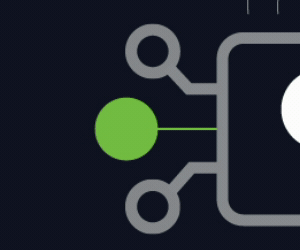Password Protection and End-to-End Encryption
Roopam Jain, vice president of the information and communications technologies practice at Frost & Sullivan, says that organizations should be concerned about unauthorized access and the privacy of data shared in meetings.
“Today’s meeting platforms have come a long way in offering advanced features that assure users and IT managers that their meetings are fully secure and compliant,” she explains.
Features including end-to-end encryption, waiting rooms to control who joins the meeting, password protection and two-factor authentication all add an extra layer of security.
“These capabilities ensure that collaboration platforms provide a secure environment for meetings, protect sensitive information and maintain privacy,” Jain says.
Implementing the Right Security Features for Healthcare
Heidi Shey, a principal analyst at Forrester, says while popular tools including Microsoft Teams, Webex and Zoom are “secure for general-purpose use,” the level of required security depends heavily on how the platform is being used.
Healthcare organizations are using them for internal collaboration as well as patient communication, in some cases, which means protected health information could be at risk.
“A lot of it comes down to what that use case is and what information is being conveyed and stored within these platforms,” she adds.
Shey says that ensuring the correct configuration of features, including MFA or encryption of data at rest, is critical.
“That’s the other side of the responsibility of making the best use of what you are purchasing,” she says.
RELATED: These insights can help you optimize your collaboration environment.
Managing Healthcare Security Risks
Collaboration platforms carry a range of security risks that healthcare organizations can’t afford to overlook. As data volume grows exponentially, so does the attack surface.
“Too much data makes it harder to detect violations,” Glenn says.
Another layer of complexity comes from regulatory requirements. All healthcare organizations, regardless of size, must comply with HIPAA regulations.
“This adds serious complexity to how data must be handled and secured,” she explains, noting that noncompliance can quickly become a legal and reputational risk.
Insider risks — both accidental and malicious — remain a growing issue, compounded by the potential for compromised accounts and external threats such as ransomware.
“Collaboration platforms need to adapt to organizational fluidity,” Glenn says. “Otherwise, sensitive data can end up in front of the wrong eyes.”
If access controls are weak or misconfigured, she warns, collaboration platforms can become gateways for data loss.
The Healthcare Threat Landscape Is Growing More Complex
The collaboration threat landscape is also growing more complex, and healthcare organizations must be aware of the evolving risks that come with it.
“Enterprises of all sizes are generating so much data, and attackers are using this to their advantage,” Glenn explains.
Complicating matters is what she calls “tool overload.”
While having the right tools is essential, she says, many organizations are struggling under the weight of too many disparate solutions.
“This can lead to incorrect configuration, inconsistent policies and just general confusion,” she says. “This opens the door to preventable vulnerabilities.”












